Specialized’s newest Turbo Levo received a lot of good press when it was launched, including a near-perfect review of the S-Works version written by me.
The Turbo Levo Comp Alloy is at the more affordable end of the spectrum compared to the S–Works bike, coming in at £6,750, but with the intention of retaining the magic of the carbon-framed version that was such a resounding success.
Thanks to 150mm of rear-wheel travel, mullet wheels (29in front, 27.5in rear) and highly adjustable geometry, the Turbo Levo comfortably straddles the trail and enduro categories with total confidence.
Keeping down the asking price of this model sees Fox’s 160mm-travel 36 Rhythm electric bike fork mated to a Fox Float X Performance shock. It uses SRAM’s GX Eagle drivetrain, but is fitted with a host of Specialized and Roval-branded parts.
Specialized’s 2.2 motor co-developed with Brose and 700Wh capacity provide the assistance and power, boasting 90Nm of torque and 565 peak watts.
Specialized Turbo Levo Comp Alloy frame and suspension

The Turbo Levo Comp Alloy’s frame is made from Specialized’s M5 premium alloy, featuring internally routed cables, integrated chain-slap protection and enough space beneath the shock for a 625ml water bottle.
Now synonymous with Specialized bikes, the Sidearm strut that spans the length of the rear shock between the top and seat tubes is present and is claimed to tune the frame’s stiffness.
Suspension kinematics
The 150mm of rear-wheel travel has been given Specialized’s Rx Tune, where the kinematics, leverage curve, damper tunes and spring rates have all been designed to work together to provide the best on-trail feel.
According to Specialized’s own leverage-rate data, the Turbo Levo is 22 per cent progressive through its travel, making it one of the more linear bikes in this test. However, with the adjustable-volume air-spring shock, more progression can be added.
Specialized states it has a rearward axle path up to 65mm into its travel, moving just under 5.6mm rearwards at its maximum point, then finishing 4mm further forward than full extension once it hits bottom-out.

Although that sounds impressive, its axle path is similar to most traditional low-pivot bikes, rather than being innovative.
The brand makes no claims about anti-rise or anti-squat, but according to Linkage Design, at sag in the easiest gear it has 120 per cent anti-squat, which should cause the suspension to resist pedal-induced bob.
With anti-rise numbers that range from 58 per cent at full travel to just over 50 per cent at bottom-out, it should be supple while braking, because braking forces are trying to extend the suspension in its travel.
Specialized Turbo Levo Comp Alloy battery and motor
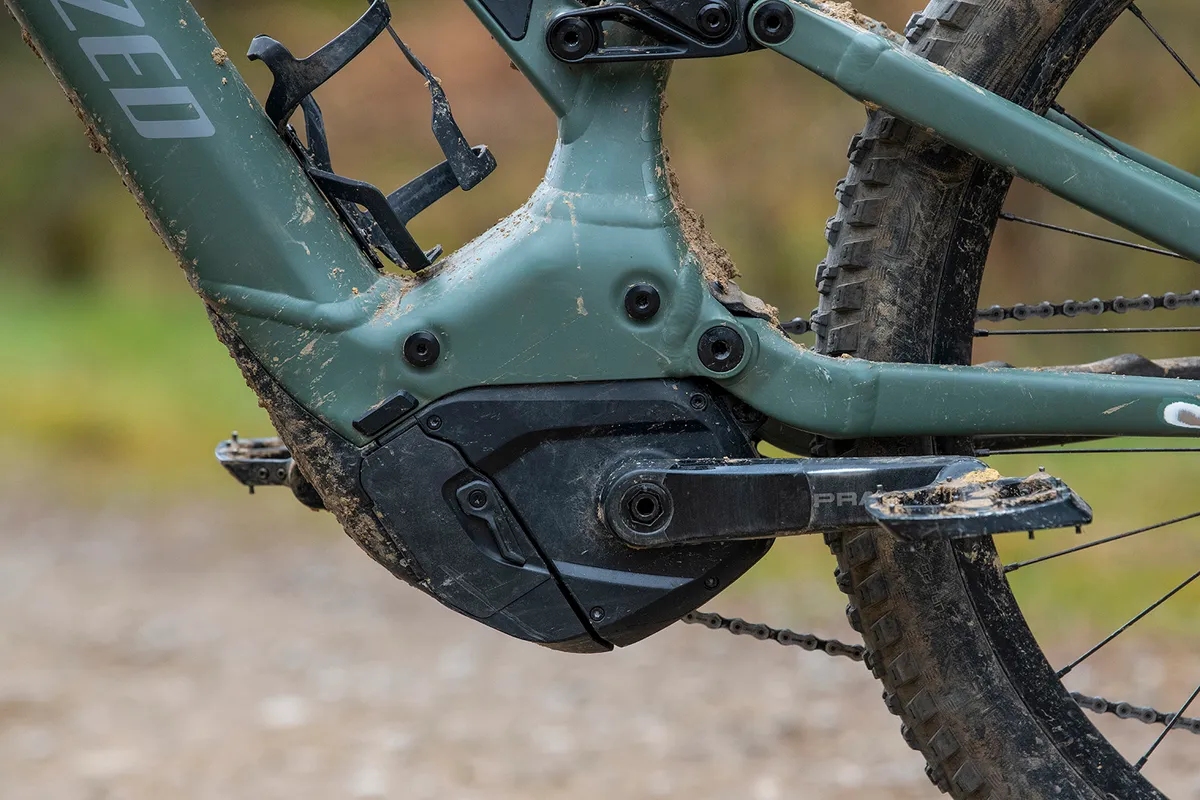
Fitted with the updated Turbo Full Power System 2.2 motor, the Turbo Levo offers 90Nm of peak torque, beating both Bosch and Shimano motors by 5Nm. Specialized claims the 2.2 version of the motor received a host of updates to improve reliability, and my extensive testing on the S-Works Turbo Levo has so far proven those claims.
The Comp Alloy is fitted with the largest 700Wh battery, but doesn’t have the MasterMind TCU with in-built display.
Instead, it has a 10-LED battery indicator and three-LED mode display. Unfortunately, that means micro-mode adjustments, where assist levels can be adjusted in 10 per cent increments, aren’t available.
However, the motor does have ANT+ and Bluetooth connectivity, and each of its three modes can be modified in the Mission Control smartphone app.
Specialized Turbo Levo Comp Alloy geometry
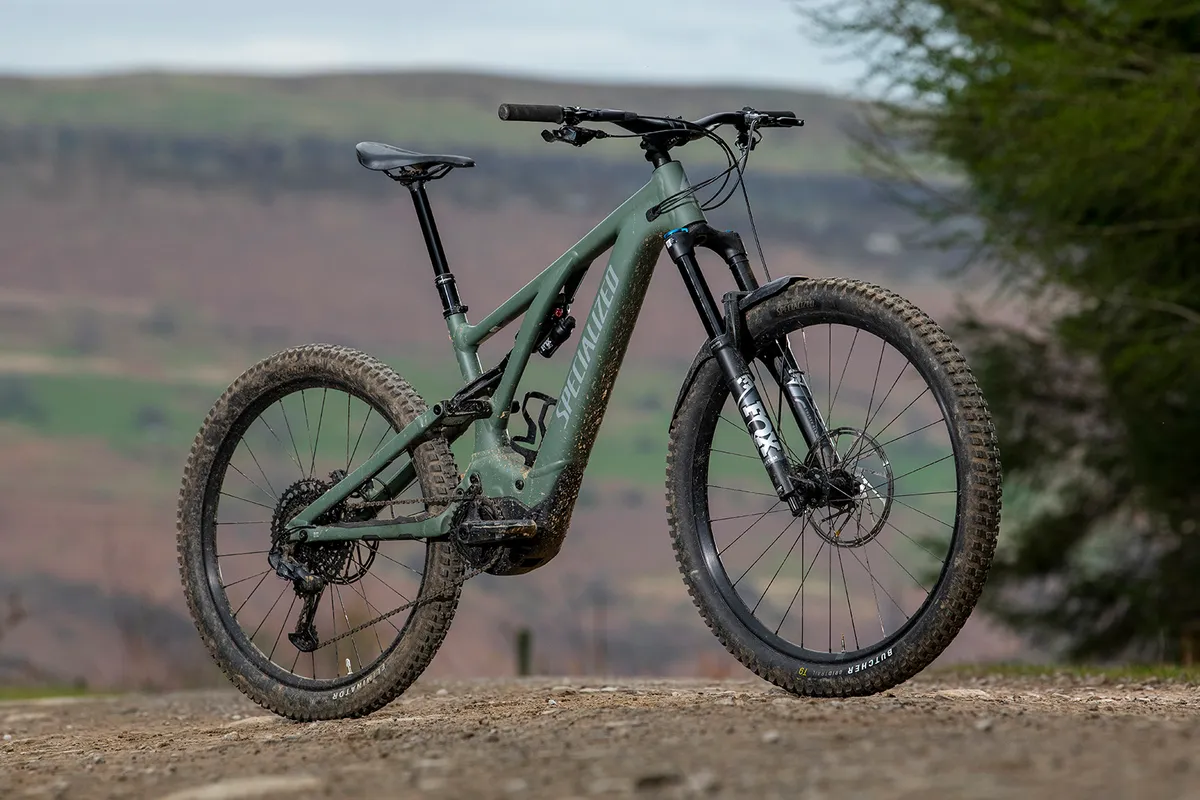
Super-customisable geometry helps give the Turbo Levo its category-defying handling.
Thanks to a Horst-link pivot flip chip and three head-angle positions, its geometry can be morphed from sedate trail bike to raked-out enduro rig.
Like other Specialized bikes, the Turbo Levo Alloy uses the brand’s S-sizing, where the focus isn’t on seat-tube lengths dictating what size bike a rider should select.
Rather, seat-tube lengths are kept short across the six-size range (from 380 to 465mm) so riders can size up (or down) from their recommended bike to have a more nimble or more stable ride.
For my 178cm height, I chose to test the S4 bike that has a 477mm reach. Head angles can be set anywhere from 65.5 degrees down to 63 degrees, and bottom-bracket heights change by 7mm depending on setting.
In the low and slack setting, the wheelbase is 1,268mm, the chainstay 447mm and the bottom bracket sits 342mm above the ground. The Turbo Levo’s geometry makes it a trail bike like no other.
| | S1 | S2 | S3 | S4 | S5 | S6 |
|---|---|---|---|---|---|---|
| Seat angle (degrees) | 78 | 77.2 | 76.7 | 76.2 | 76.2 | 76.2 |
| Head angle (degrees) | 64.5 | 64.5 | 64.5 | 64.5 | 64.5 | 64.5 |
| Chainstay (mm) | 442 | 442 | 442 | 442 | 442 | 442 |
| Front centre (mm) | 738 | 760 | 784 | 814 | 843 | 878 |
| Seat tube (mm) | 380 | 390 | 405 | 425 | 445 | 465 |
| Head tube (mm) | 105 | 105 | 115 | 125 | 135 | 145 |
| Bottom bracket drop (mm) | 25 | 27 | 27 | 27 | 27 | 27 |
| Bottom bracket height (mm) | 352 | 350 | 350 | 350 | 350 | 350 |
| Wheelbase (mm) | 1,179 | 1,200 | 1,225 | 1,255 | 1,284 | 1,318 |
| Standover (mm) | 752 | 776 | 783 | 787 | 788 | 790 |
| Stack (mm) | 605 | 617 | 626 | 635 | 644 | 653 |
| Reach (mm) | 412 | 432 | 452 | 477 | 502 | 532 |
Specialized Turbo Levo Comp Alloy specifications
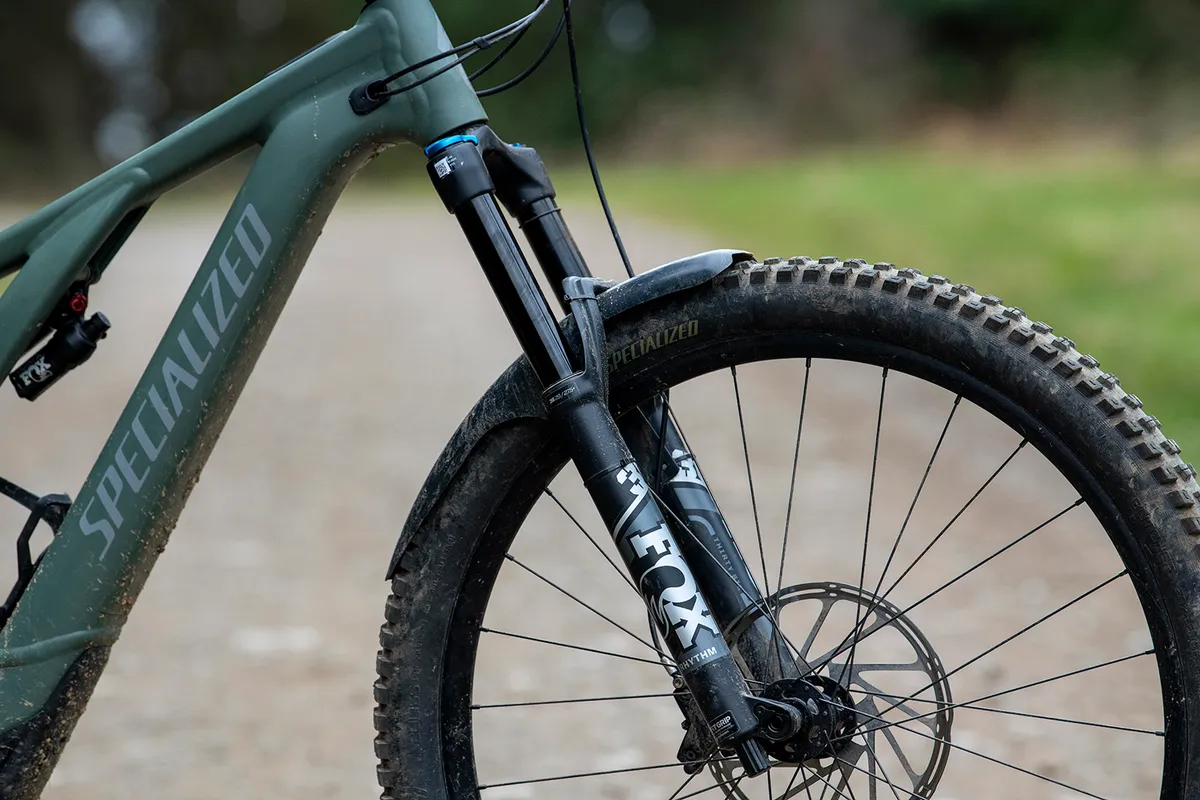
Specialized hasn’t compromised on motor or battery specifications for this Alloy version, so to keep the price down certain parts have been downgraded from the S-Works model.
Up front, we see a Fox 36 Rhythm ebike fork with 160mm of travel. This ebike version has thicker stanchions compared to standard EVOL 36s, and means the air spring has a lower volume.
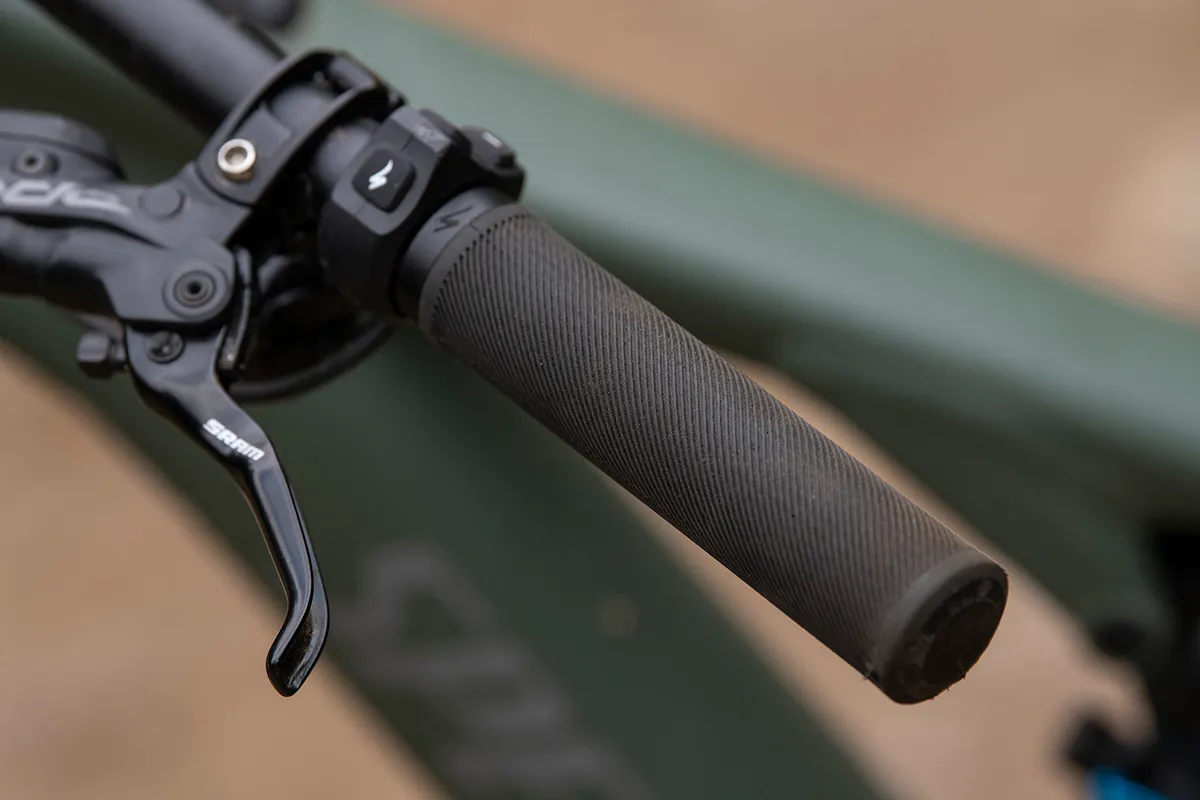
Out back is a Fox Float X Performance shock with low-speed rebound adjustment and a two-position lockout.
It’s specced with SRAM’s GX Eagle drivetrain and Code R brakes with a 220mm front rotor and 200mm rear.
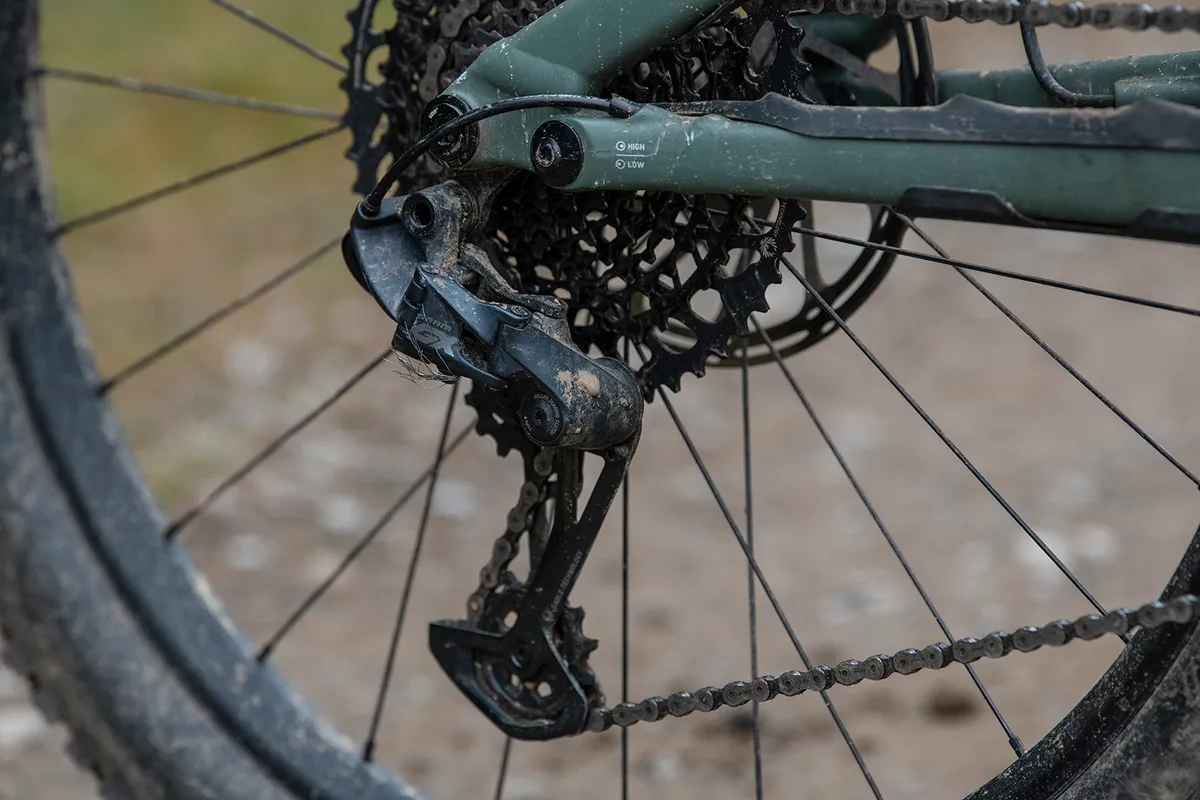
There are a host of Specialized components, including bar, stem, saddle, grips, and wheels wrapped in Specialized Butcher front and Eliminator rear GRID TRAIL casing rubber, while the X-Fusion Manic dropper has 175mm of travel (S4).
Without pedals, my S4 test bike weighed 24.02kg on my scales.
Specialized Turbo Levo Comp Alloy ride impressions

I tested the Turbo Levo in Scotland’s Tweed Valley, home to the UK’s round of the Enduro World Series and legendary Glentress trail centre.
During the test period, conditions ranged from mid-winter wet and snow through to dry and dusty warm spring conditions. The Turbo Levo got a true workout on a wide range of trails.
Specialized Turbo Levo Comp Alloy setup
As the only bike in this category with Fox’s 36 ebike-specific fork and Float X shock, setup compared to the other bikes was different.
Thanks to the 36 Rhythm ebike fork’s lower-volume air spring, I had to run less spring pressure than I was used to.
After starting with 93psi, where there was some harshness, I lowered it to 80psi and installed three volume-reducer spacers. This gave me 35mm/21.8 per cent sag. I set the rebound to taste, and the GRIP damper’s compression lever was set to fully open.
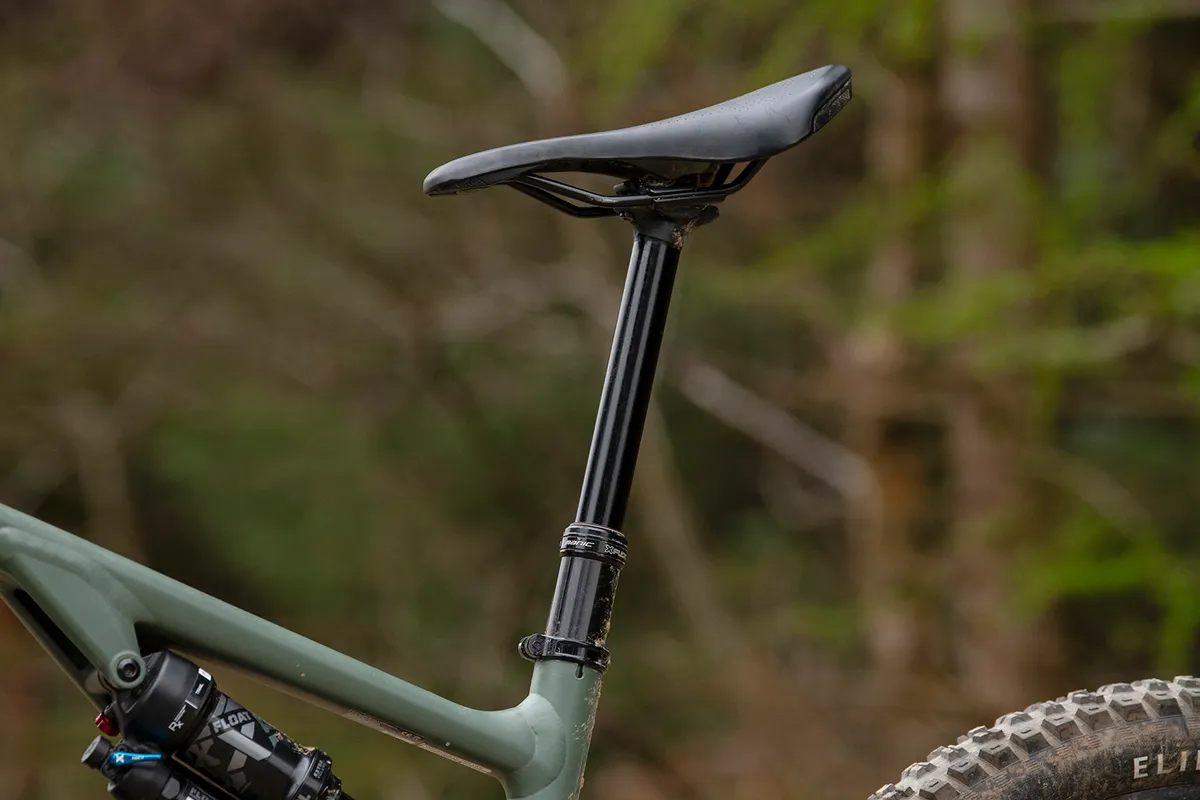
The Float X came installed with a yellow 0.2in cubed volume-reducer spacer and needed 190psi of pressure to stop excessive bottoming, but this sacrificed small-bump compliance.
I installed a larger 0.4in cubed spacer and reduced pressure to 180psi. This reduced bottom-outs, improved sensitivity and gave the bike 16mm/29 per cent sag. I set the rebound adjuster to fully open.
After testing the bike in multiple geometry configurations, I settled on the slackest, lowest and longest settings.
I adjusted the tyre pressures according to trail conditions, but compared to thicker-casing tyres, the thin GRID TRAIL versions meant higher pressures were needed to protect against punctures and provide good carcass stability.
Specialized Turbo Levo Comp Alloy climbing performance
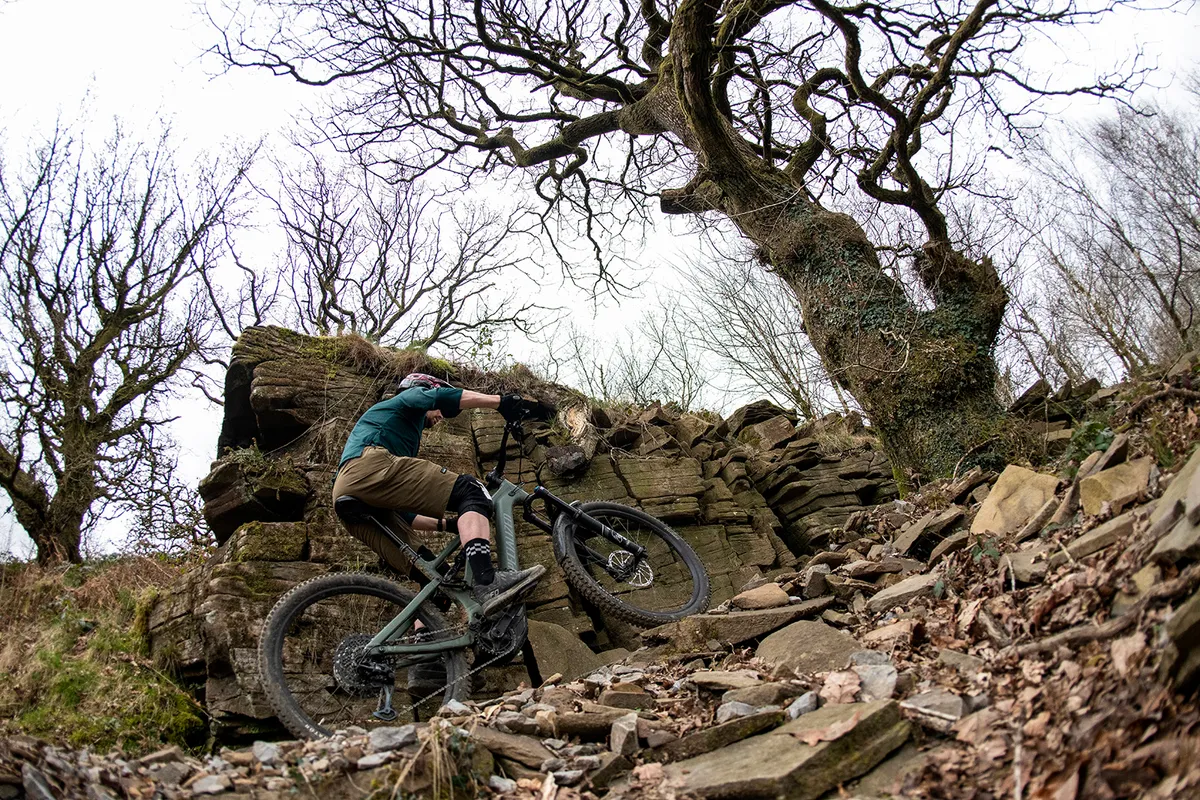
On the climbs, the Turbo Levo’s chassis and motor work in harmony to provide a powerful, comfortable and fluid experience.
The motor’s natural, discreet but strong assistance defines a large part of the ride. Its progressive nature, where it tapers both on and off in the same way a rider’s natural inputs would, make it exceptionally easy to control. Wheelspins are irregular and traction on soft, wet ground is impressively easy to control.
It’s backed up by the well-balanced climbing position, where my body’s weight felt centralised over the middle of the bike.
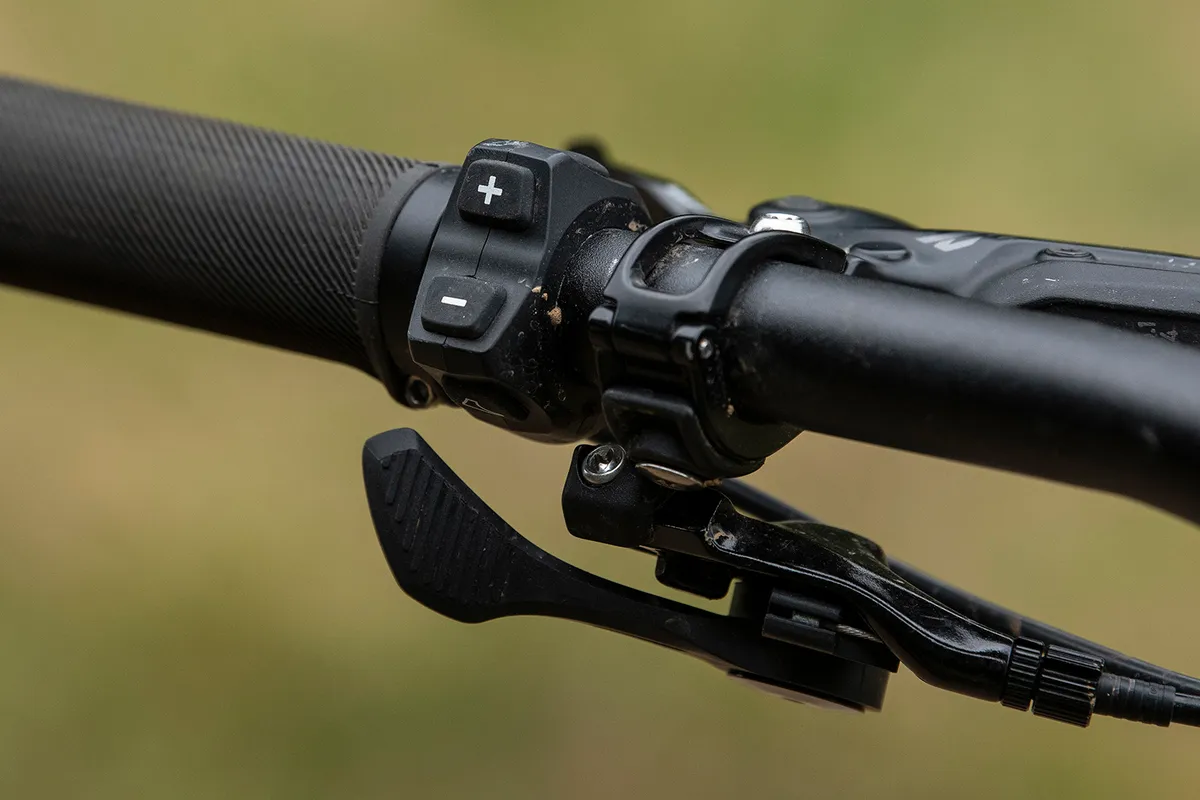
The generous 447mm chainstays and long 821mm front centre (the distance between the bottom bracket and front wheel axle) combine with the steep seat-tube angle and relatively stout top tube to give a fairly upright seated riding position.
This makes keeping the front wheel glued to the ground or feeding in traction to the rear wheel much easier than a bike with geometry that stretches a rider out over the front, or positions them a long way over the back wheel. Hand and arm fatigue was also reduced, thanks to most of my weight going through my sit bones rather than into my hands.

The Turbo Levo’s seat tube angle positioned my hips over the bottom bracket rather than behind it, improving seated climbing comfort and efficiency compared to a bike that encourages a more stretched position.
To boot, the soft Specialized Trail Grips and Bridge Comp saddle further boosted comfort; both are some of the most luxurious-feeling on the market.
Fox’s Float X shock isn’t as supple and active as the X2 fitted to the S-Works version of this bike. This reduces traction and limits comfort on small bumps frequently found on worn-out trail centre surfaces, where the rear suspension feels harsh at the start of its travel.
Many factors are at play here, but the negative air chamber size and need for increased spring pressure over other shocks were the biggest contributors.
Battery life
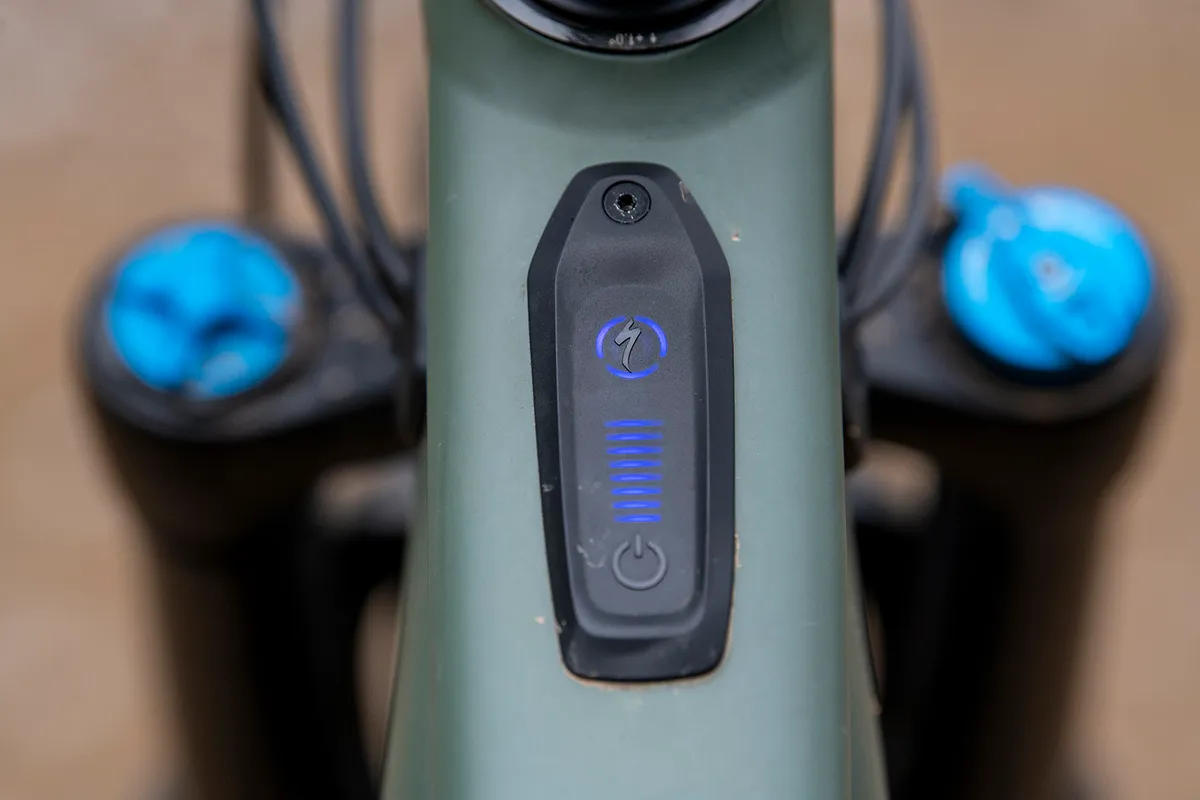
Thanks to the 700Wh battery, the Turbo Levo can easily exceed 2,000m of climbing on a single charge if assistance levels are kept low. In trail, that figure is between 1,700m and 1,900m, and in turbo it drops to 1,500m.
Battery life is akin to Bosch- and Shimano-powered bikes fitted with the smaller 625Wh and 630Wh batteries, meaning the Turbo Levo is less efficient with how it uses its power. Compared to the Yamaha-driven Giant Reign E+ 1, the Turbo Levo is much more efficient and easier to control.
The basic TCU display is a significant downgrade from the MasterMind version, where adjusting assistance in 10 per cent increments is a dearly missed feature. As is an accurate battery life percentage. That said, the LED battery and mode indicators are logical and clear to read.
Specialized Turbo Levo Comp Alloy descending performance
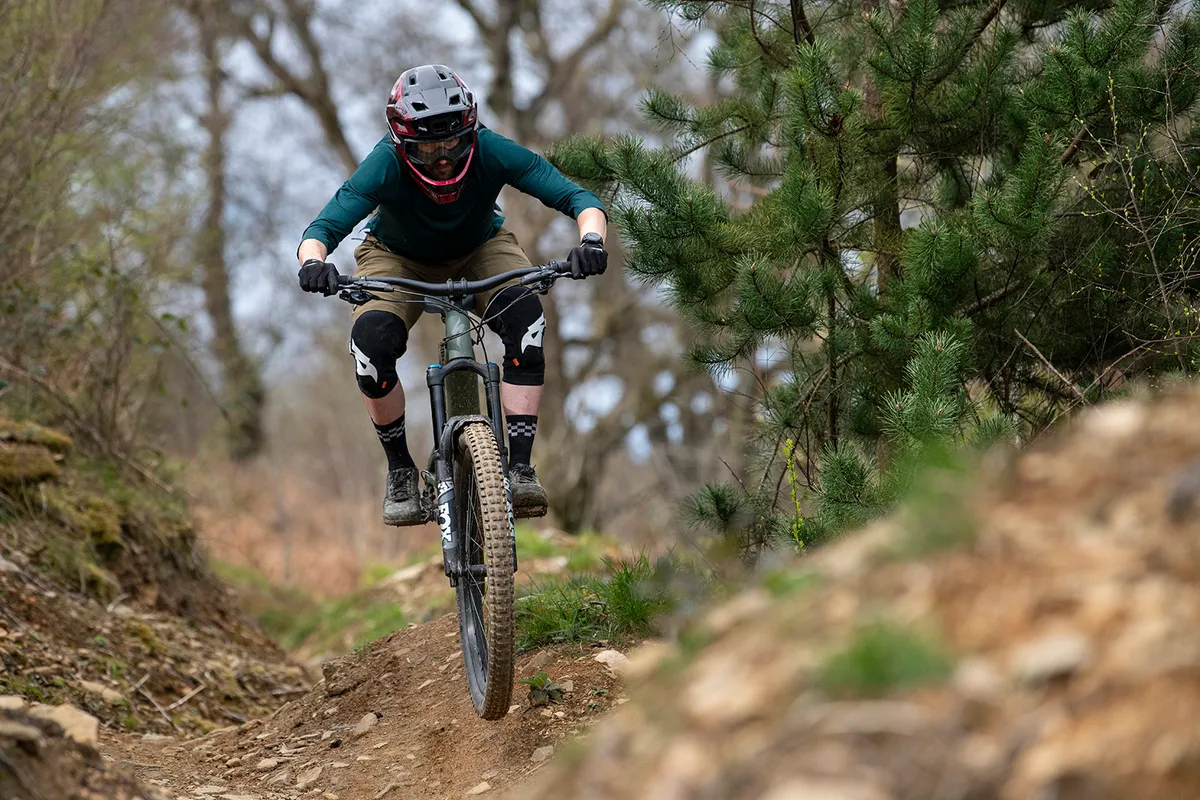
Undeniably, the magic of the carbon-framed S-Works Turbo Levo is still present with the alloy version, or at least it could be unleashed with a few component upgrades.
The chassis’ sizing and front-to-rear-centre ratio, plus the hand-to-feet relationship, the bottom-bracket height, and reach and stack figures made me feel like I was riding in the bike, rather than on top of it. That connection helped it feel amazing in the turns, where it was easy to lean over and commit, the bike augmenting rider inputs by just the right amount.
Equally, when charging down a flat-out straight, it was possible to sense the chassis contributing to overall stability. This made committing to high lines into turns or charging across cambers an efficient and rewarding way to ride.
Despite its weight being one of the lowest of our bikes in this category, it frequently overwhelmed the trail-focused damper. At the lower pressures required to improve comfort and traction, it struggled to provide enough support in its mid-stroke to truly complement the frame’s capabilities.
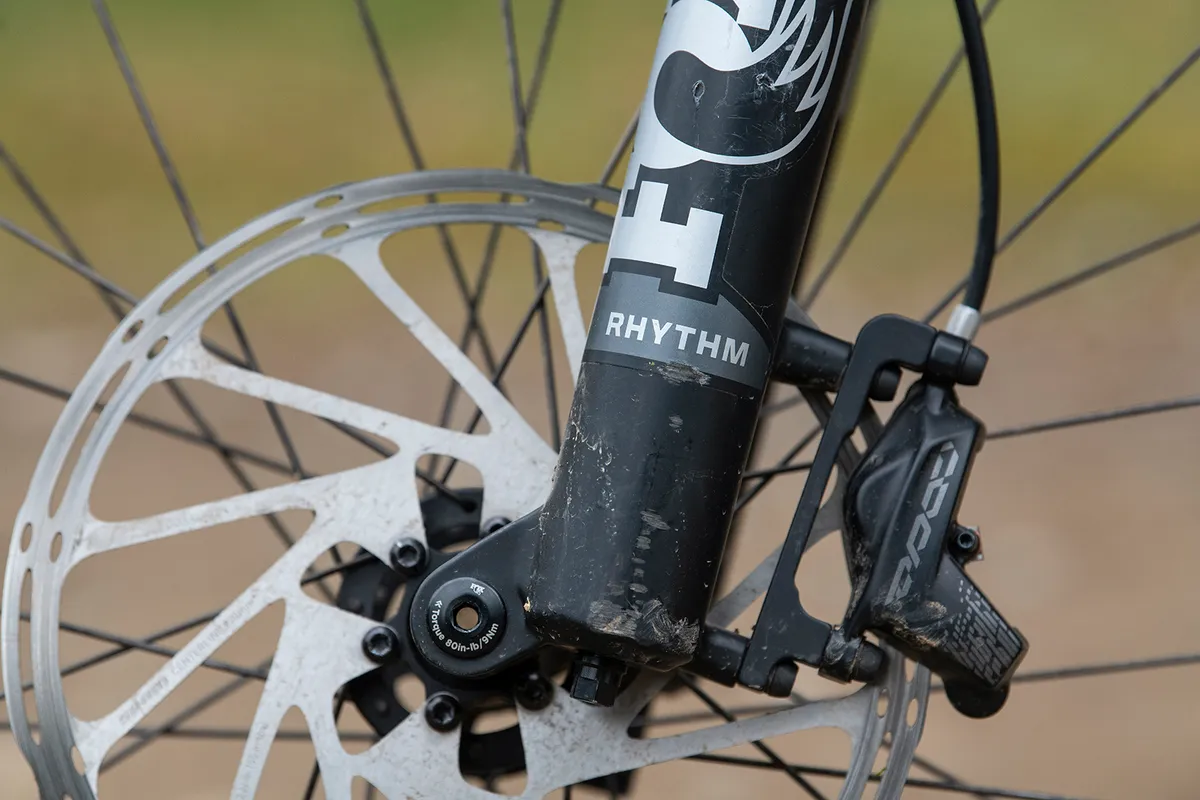
Increasing the size of volume-reducer spacer helped, but only really reduced bottom-outs rather than improving mid-stroke performance. In this respect, the Fox X2 fitted to the higher-end Turbo Levo bikes is much better suited to the bike’s performance potential.
It was a similar story with the fork. Thanks to the reduced-volume air spring at the higher pressures needed to provide bottom-out resistance and mid-stroke support, it felt harsh at the start of its travel. This gave the front end a perceptible pinginess on small, chattery bumps, which reduced grip and control. It compromised comfort and increased hand fatigue, too.
Reducing air pressure and increasing the number of tokens helped improve the fork’s performance, but compared to the larger air springs found on Fox’s EVOL forks, it was still compromised enough to reduce the Turbo Levo’s overall ride quality.
However, the Fox 36 chassis had plenty of stiffness to handle higher speeds, and I had no complaints about the GRIP damper in terms of control.
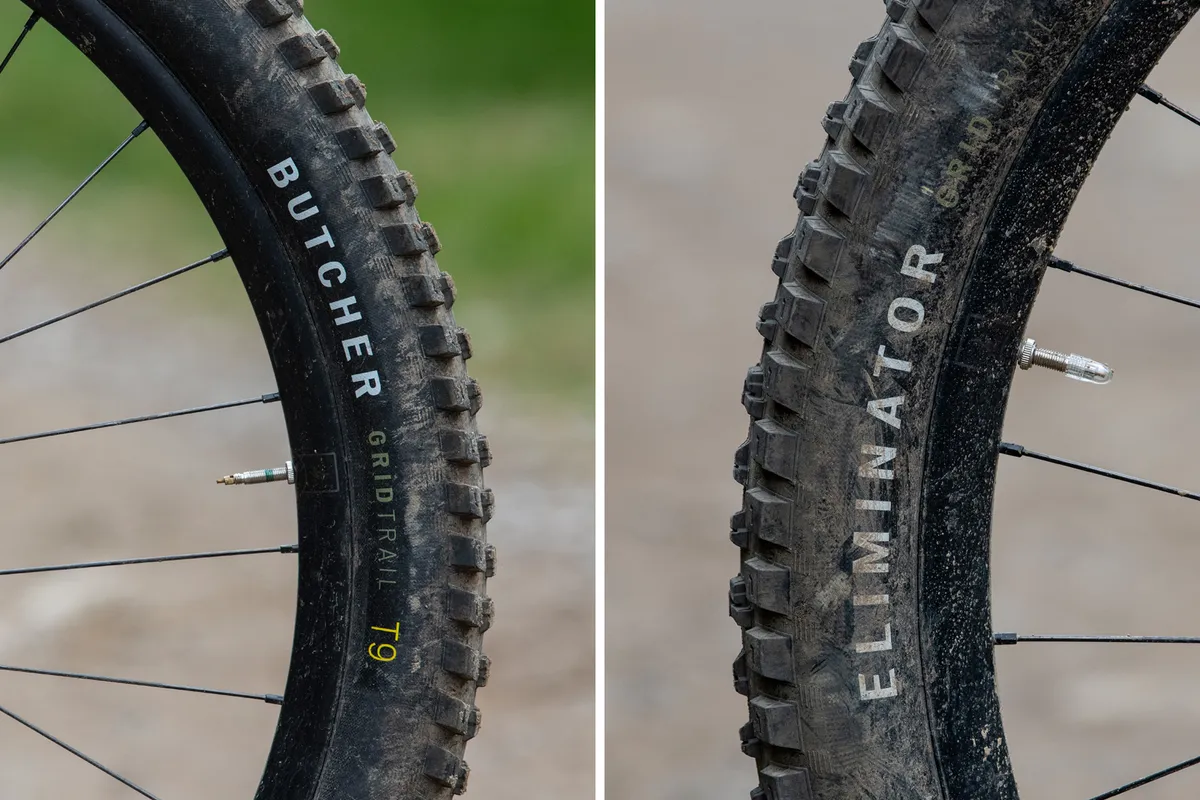
Adding to the underperforming suspension was Specialized’s high-volume GRID TRAIL casing tyres.
The increased pressures required to maintain carcass stability accentuated the harshness of the fork and under-damped feel of the rear shock.
It was possible to run lower pressures on tame terrain, and this certainly improved composure, but on more rocky or faster trails, we experienced plenty of punctures.
For the sake of a few grams, fitting thicker-casing tyres would significantly improve performance.
How does the Specialized Turbo Levo Comp Alloy compare?
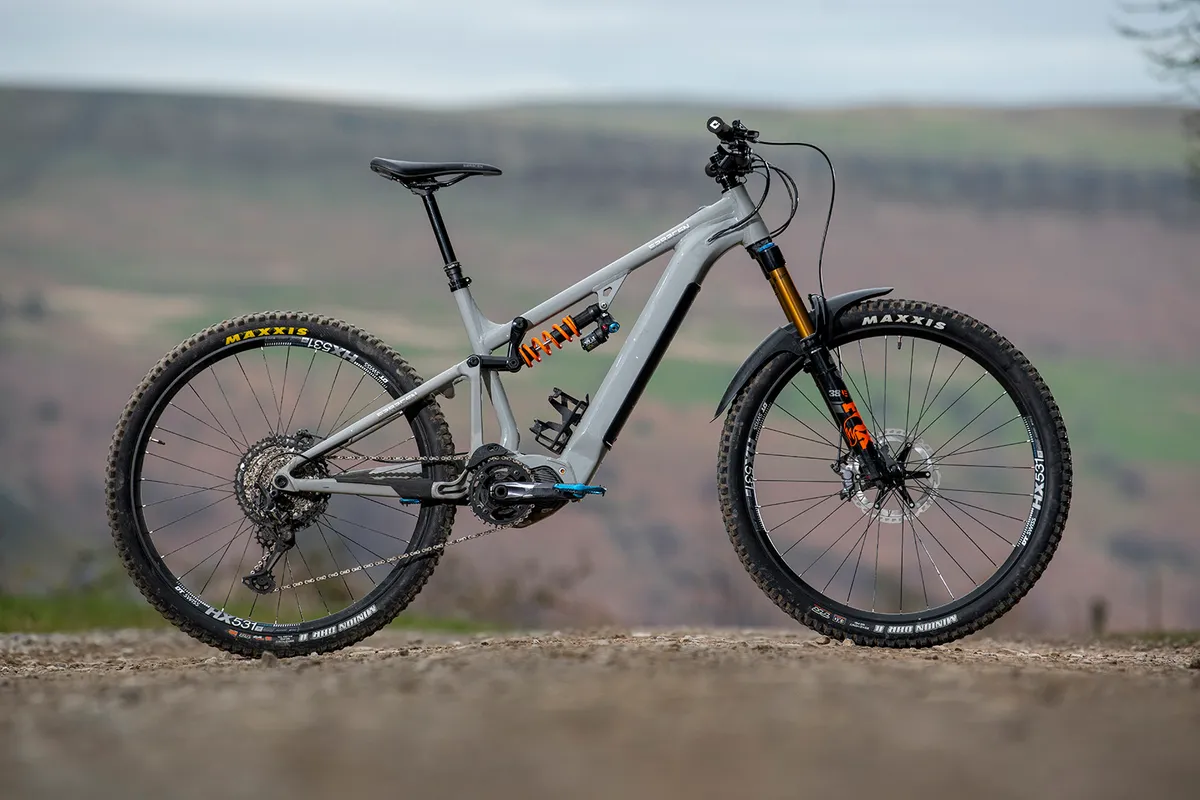
In terms of geometry, the Turbo Levo is still one of the discipline's greats. It manages to balance stability and control without needing immense amounts of commitment to get it to hook turns or stick lines.
It is much easier to ride than the Mondraker Level R, Whyte E-180 RS v3 and Giant Reign E+ 1, and is more stable than the Saracen Ariel 50E Elite and YT Decoy Core 4, beating both those bikes in terms of potential on the descents and performance and comfort on the climbs.
Arguably, though, its dampers and air springs limit how quickly, comfortably, or easily it can be ridden on gnarlier terrain, something Fox 38 and X2 or DHX2-equipped bikes don’t suffer from. The frame’s potential is there, however, it just needs better components to tap into it.
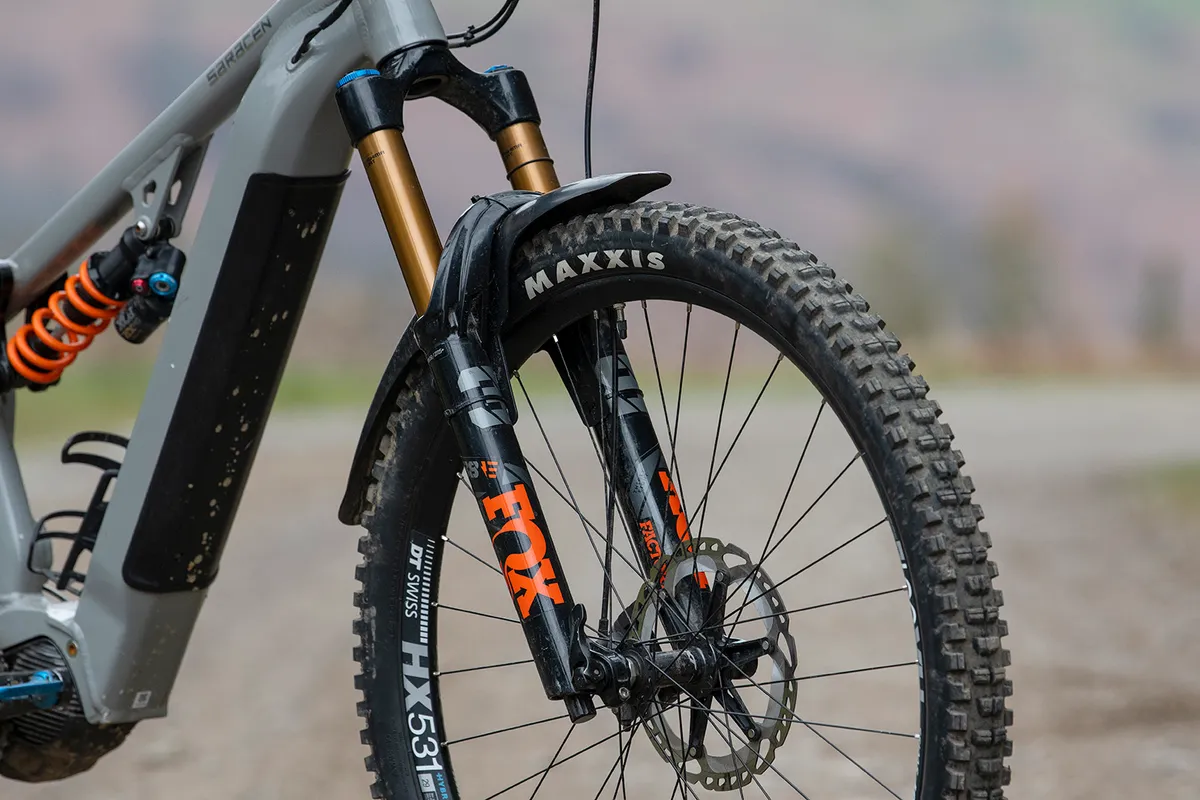
The motor and battery life are up there with the best of them, giving the Bosch and Shimano units a run for their money. Riders won’t be disappointed with the power of the Turbo Levo and how it’s delivered.
Specialized Turbo Levo Comp Alloy bottom line
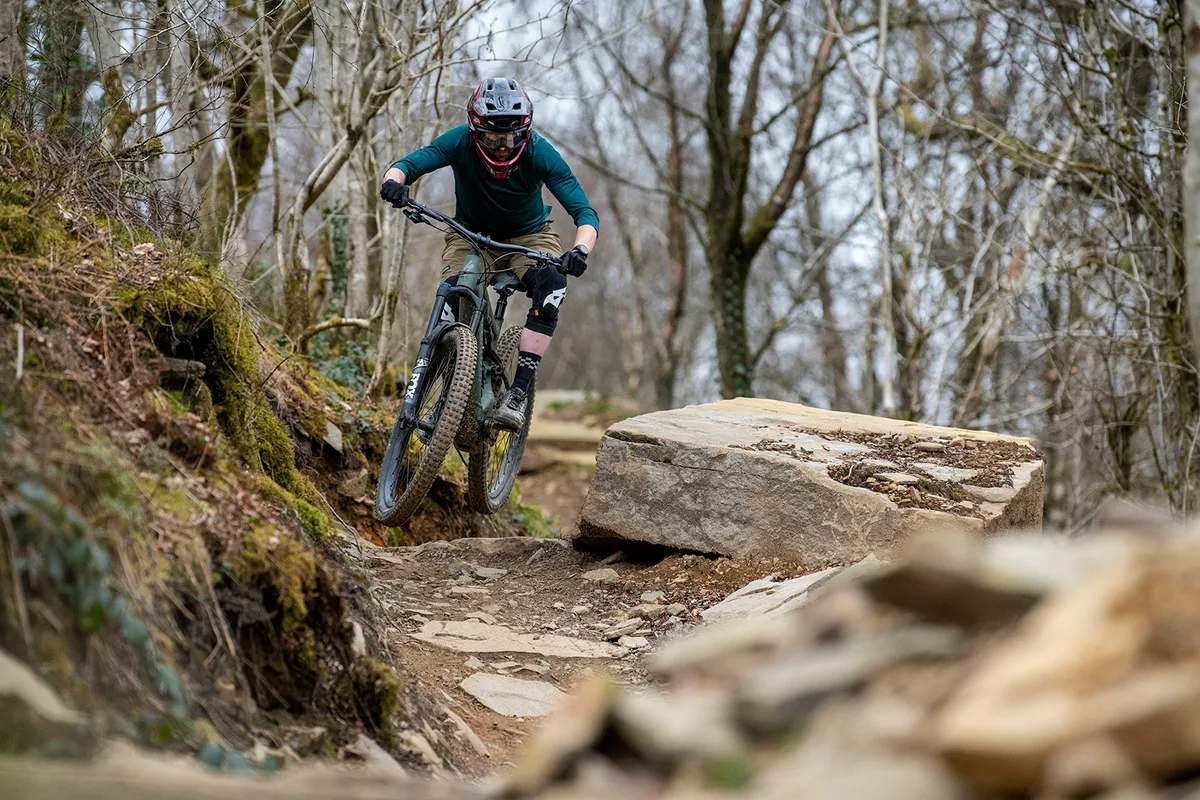
This alloy-framed version of the Turbo Levo has the potential to be as good as the S-Works bike. It uses the same motor, geometry and suspension system, and in changing the frame’s material, Specialized hasn’t compromised on feel.
However, the fork and shock, when coupled with the thin-casing tyres on this model, negatively impact control, smoothness and capability when the trails get rough and raw, which are the exact conditions the S-Works Turbo Levo excelled in.
Unlocking the magical ride quality of the S-Works bike would be possible with fork and damper upgrades, but also a costly thing to do.In my eyes, the Turbo Levo Comp Alloy doesn’t offer performance equivalent to its asking price, despite the potential being there.
How we tested
Despite this being the inaugural edition of eMTB Bike of the Year test, we’ve had plenty of experience testing ebikes to their absolute limits. That means finding out which of these eight bikes is the best electric mountain bike currently on sale was made a little easier.
Although that’s not say our job was simple, and choosing a winner came down to the wire where the second and first place bikes swapped positions more times than we checked our tyre and shock pressures.
The majority of the ebike testing happened in Scotland’s Tweed Valley, home to the legendary Glentress trail centre, Golfie enduro tracks and Innerleithen downhill runs. The terrain we tested the bikes on, therefore, was wide in scope and representative of what a modern enduro bike should be able to handle, whether that was gravity-fuelled laps on the DH tracks, epic enduro missions with long descents or gruelling trail rides with hours in the saddle.
To win this year’s test, we were looking for a bike that offered the best all round package with fewest compromises and was able to perform on every type of riding we could throw at it. In an ode to a bike tester’s cliché, it had to descend like a downhill bike, pedal and climb like a cross country bike and be as comfortable to ride as an enduro bike.
Our 2022 eMTB Bike of the Year contenders are:
Product
| Brand | specialized |
| Price | 11700.00 AUD,7250.00 EUR,6750.00 GBP,7500.00 USD |
| Weight | 24.0400, KILOGRAM (S4) - without pedals |
Features
| Fork | Fox 36 Rhythm, 160mm (6.3in) travel |
| br_stem | Alloy Trail, 50mm |
| br_chain | SRAM NX Eagle |
| br_frame | Specialized M5 Premium Alloy, 150mm (5.9in) travel |
| br_motor | Specialized Turbo Full Power System 2.2 Motor/Specialized M3-700 700Wh/Specialized TCU |
| Tyres | Specialized Butcher GRID TRAIL GRIPTON T9 2Bliss ready 29x2.6in (f), Specialized Eleminator GRID TRAIL GRIPTON T7 2Bliss Ready 27.5x2.6in (r) |
| br_brakes | SRAM Code R, 220/200mm rotors |
| br_cranks | Praxis forged M30, 32t |
| br_saddle | Specialized Bridge Comp |
| br_wheels | Specialized 29 rims on Specialized Alloy hubs |
| br_headset | Specialized angle adjust |
| br_shifter | SRAM GX Eagle |
| br_cassette | SRAM XG-1275, 10-52t |
| br_seatpost | X-Fusion Manic (dropper) |
| br_gripsTape | Specialized Trail Grips |
| br_handlebar | Specialized Alloy, 780mm |
| br_rearShock | Fox Float X Performance |
| br_availableSizes | S1, S2, S3, S4, S5, S6 |
| br_rearDerailleur | SRAM GX Eagle (1x12) |
